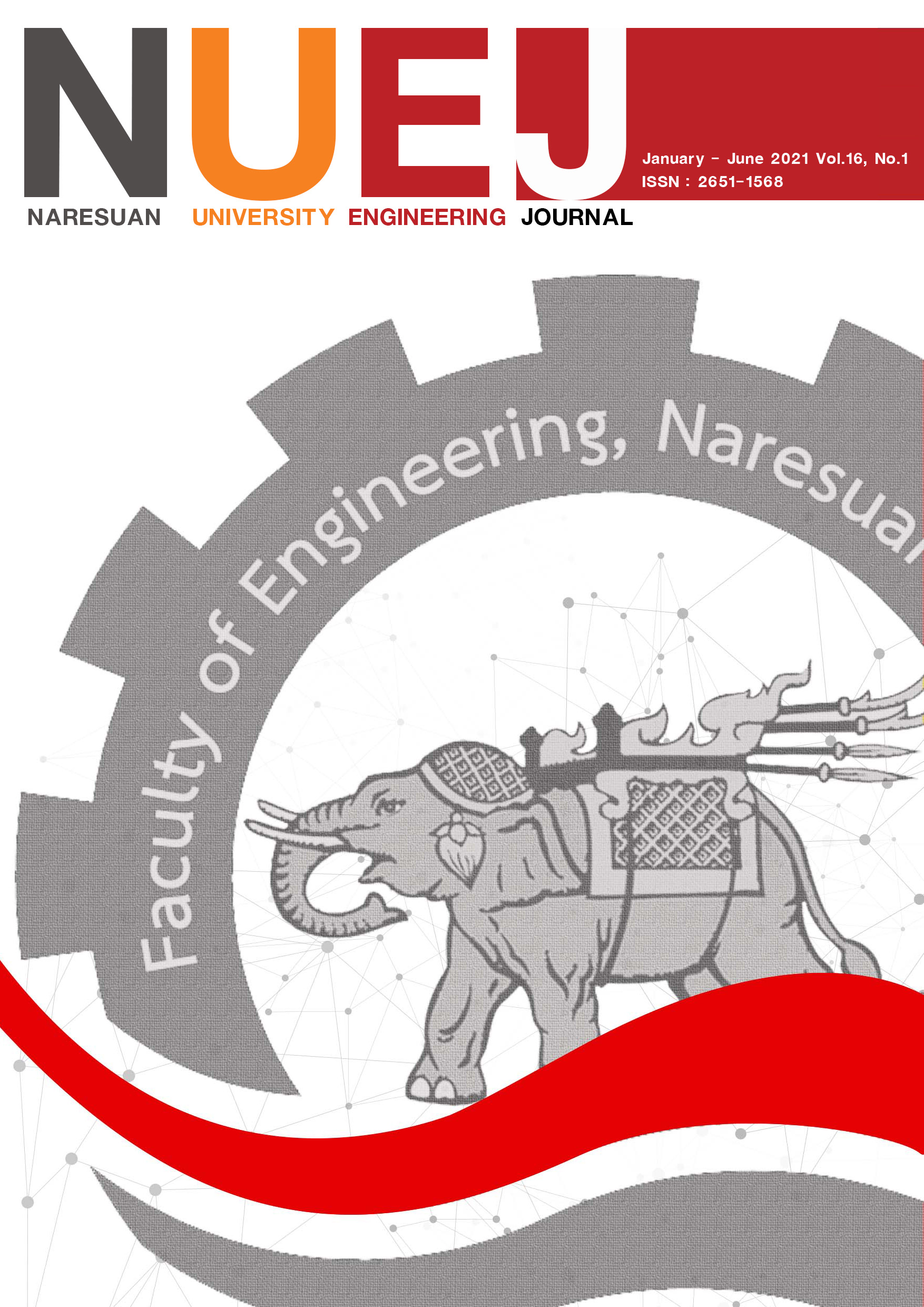The Efficiency Improvement of STR 20 Block Rubber Production Process by Using Design of Experiments
Main Article Content
Abstract
The objective of this research is to investigate optimum parameters for STR 20 block rubber production process while all possible constrains are carefully taken into consideration. According to the current problem study, it was found that the proportion of the achieved rubber with white-spot problems, caused by inappropriate drying process, went higher than the factory acceptable range. The analysis was done by applying the Cause-and-Effect diagram and Failure Mode and Effect Analyze method (FMEA). It revealed that the white-spot problems were mainly caused by improper working parameters operated in the production process. In order to systematically solve the problems, the Lean Six Sigma approach was integrated. The 2K Factorial experiment design was used to screen for system variables and Box-Behnken experiment design was applied to get the optimal production conditions. The experimental designs provided the optimum drying process parameters. For the STR 20 block rubber drying process, the appropriate moisture discharging and drying temperatures were 110 and 120 degree Celsius, respectively. The 3-millimeter-thick mixed rubber should be dried in 210 minutes. The achieved parameters were then used in the onsite production line. The results showed that the new parameter process decreased the fraction the problematic white-spot rubber by 17.16 percent. The capability analysis (Cpk) was 1.45 with 0.05 significance level. It indicated the highly efficient process as the confidence interval of the process was 1.04 < Cpk < 1.87. The estimated reduced cost from white-spot block rubber reprocessing was 924,630 Baht per year.
Article Details
References
Breyfogle III, F.W. (2003). Implementing six sigma: smarter solutions using statistical methods (2nd ed.). John Wiley & Sons.
Chutima, P. (2002). Engineering experimental design. Chulalongkorn University Press.
Coelhoa, T., Braga, F., Silva, N., Dantas, C., Lopes, C., Sousa, S. & Vieira, E. (2019). Optimization of the protein extraction method of goat meat using factorial design and response surface methodology. Journal of Food Chemistry, 281, 63-70. https://doi.org/10.1016/j.foodchem.2018.12.055
Hassan, M. (2013). Applying lean six sigma for waste reduction in a manufacturing environment. American Journal of Industrial Engineering, 1(2), 28-35. https://doi.org/10.12691/ajie-1-2-4
Homkhiew, C., Boomchouytan, W., & Rawangwong, S. (2017). Optimal manufacturing parameters of rubberwood flour/high density polyethylene composites using box-behnken design. The Journal of King Mongkut's University of Technology North Bangkok, 27(2), 315-328. https://doi.org/10.14416/j.kmutnb.2017.03.009
Kaewploy, S. & Boonseng, K. (2014). Design of experiment for evaluating the optimal condition in drying process of rubberwood. Khon Kaen University Research Journal, 19(2), 284-292.
Ketsarapong, P. & Sriyanalugsana, S. (2019). Reducing defective in food refrigerator production process with six sigma technique. Kasem Bundit Engineering Journal, 9(2), 25-37.
Khuri, A. (2006). Response surface methodology and related topics. World Scientific Publishing.
Leenatham A. & Khemavuk P. (2019). Process improvement of PTCA guide wire by using design of experiment. SWU Engineering Journal, 14(2), 12-24.
Leenatham N., Sudsomboon W., Kaewdee C. & Krainara A. (2019). Reducing of the wasting time in the dirt testing process of rubber by lean six sigma approach: a case study in a rubber factory. Wichcha Journal, 38(2), 104-119.
Montgomery, D.C. (2019). Design and analysis of experiments (10th ed.). John Wiley & Sons.
Montgomery, D.C. (2019). Introduction to statistical quality control. (8th ed.). John Wiley & Sons.
Myers, R. H., Montgomery, D. C. & Anderson-Cook, C. M. (2016). Response surface methodology: process and product optimization using designed experiments (4th ed.). John Wiley & Sons.
Puangthong, J. & Daengkanit, A. (2020). Rubber situation in year 2019 and trends year 2020. Para Rubber Journal, 41(2), 36-39.
Pyzdek, T., & Kller, P. (2019). The six sigma handbook (5th ed.). Mcgraw Hill.
Ramasamy, S. 2009). Total quality management. Tata Mcgraw Hill.
Sae-ui, P., & Sirisingha, C. (2007). Rubber production: process and testing. SE-ED Publishing.
Satsue, P., & Phitthayaphinant, P. (2019). Para-rubber industry under ASEAN economic community: manifestation of para-rubber plantation area in the large city of two sea. King Mongkut’s Agricultural Journal, 37(4), 675-685.
Sliva, T., & Ferreira, P. (2017). Improve the extrusion process in tire production using six sigma methodology. Procedia manufacturing, 13, 1104-1111. https://doi.org/10.1016/j.promfg.2017.09.171
Srerungruang, N., Neramittagapong, A., Sriprom, P., Kumsaen, T., Sangnak, S., & Neramittagapong, S. (2017). Optimization of back-washing condition for centrifugal extractor to minimize cassava starch loss. Khon Kaen University Research Journal, 17(2), 61-70.
Sriwarin, P., Petchernnoen, T., Ananta, M., & Kunilaasiri, A. (2014). The cost of processing primary rubber at the factory level. Para Rubber Journal, 18(3), 20-29.
Sudasna-na-Ayudthya, P., & Luangpaiboon, P. (2008). Design and analysis of experiment. TOP Publishing.


